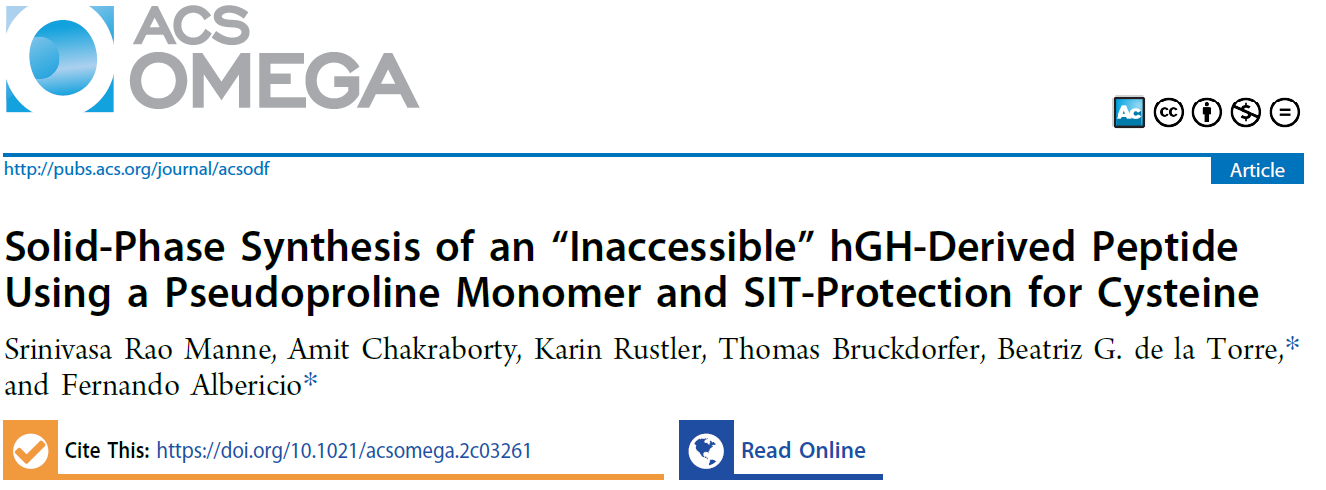Welcome to Iris Biotech
For better service please confirm your country and language we detected.

For better service please confirm your country and language we detected.

Thank you very much for your interest in our products. All prices listed on our website are ex-works, Germany, and may attract customs duties when imported.
You may/will be contacted by the shipping company for additional documentation that may be required by the US Customs for clearance.
We offer you the convenience of buying through a local partner, Peptide Solutions LLC who can import the shipment as well as prepay the customs duties and brokerage on your behalf and provide the convenience of a domestic sale.
Continue to Iris Biotech GmbHSend request to US distributorPublished on 05/09/2022

Srinivasa Rao Manne, Amit Chakraborty, Karin Rustler, Thomas Bruckdorfer, Beatriz G. de la Torre, and Fernando Albericio
ACS Omega 2022, 7, 32, 28487–2849
Abstract: The solid-phase peptide synthesis (SPPS) of the C-terminal sequence of hGH with one extra Tyr attached to its N-terminus (total of 16 residues with a disulfide bridge) has been accomplished for the first time by optimizing several synthetic parameters. First of all, the two Ser residues (positions 9 and 13 of the molecule) have been introduced as a single amino acid, Fmoc-Ser(ψMe,Mepro)-OH, demonstrating that the acylation of these hindered moieties is possible. This allows us to avoid the use of the corresponding dipeptides, Fmoc-AA-Ser(ψMe,Mepro)-OH, which are very often not commercially available or very costly. The second part of the sequence has been elongated via a double coupling approach using two of the most effective coupling methods (DIC-OxymaPure and HATU-DIEA). Finally, the disulfide bridging has been carried out very smoothly by a chemoselective thiol-disulfide interchange reaction between a SIT (sec-isoamyl mercaptan)-protected Cys residue and the free thiol of the second Cys. The synthesis of this short peptide has evidenced that SPPS is a multifactorial process which should be optimized in each case.